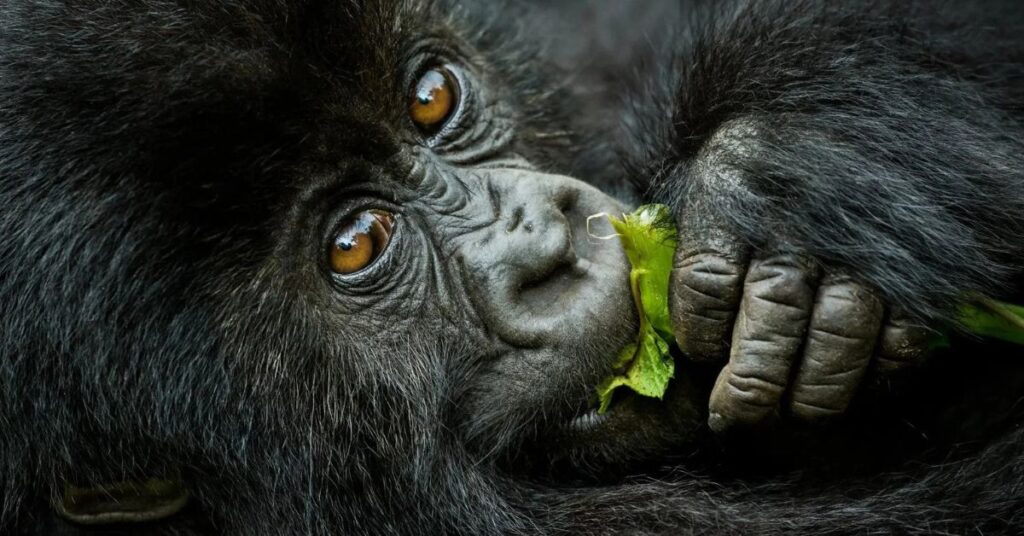
Gorilla trekking is one of the most thrilling wildlife experiences in Africa, allowing travelers to come face-to-face with mountain gorillas in their natural habitat. Uganda and Rwanda are the top destinations for this adventure, with protected gorilla populations in Bwindi Impenetrable Forest, Mgahinga Gorilla National Park, and Volcanoes National Park.
While both countries offer incredible trekking experiences, Uganda stands out as the best destination for gorilla trekking due to its affordable permits, diverse landscapes, and richer safari options. Whether you’re looking for an adventure in the dense forests of Bwindi or a chance to combine gorilla trekking with a Big Five safari, Uganda provides a more budget-friendly and immersive experience than Rwanda.
This article breaks down Uganda vs Rwanda gorilla trekking, comparing permit costs, trekking experiences, accessibility, and overall value to help you choose the best place for gorilla trekking.
Uganda is home to two incredible gorilla trekking destinations:
Uganda’s diverse landscapes, from thick rainforests to high-altitude trails, make gorilla trekking here both challenging and rewarding. The variety of trekking options ensures that visitors can choose between easier or more adventurous routes, depending on their fitness level.
Rwanda’s gorilla trekking experience is centered in Volcanoes National Park, a smaller and more compact trekking area compared to Uganda. While the park’s open bamboo forests make spotting gorillas easier, there are fewer habituated gorilla families, limiting the number of trekking permits available.
One advantage of trekking in Rwanda is its proximity to Kigali International Airport. The park is just a 2-3 hour drive from the capital, making it ideal for short trips. However, this convenience comes at a higher cost, as Rwanda’s gorilla trekking permits are significantly more expensive than Uganda’s.
One of the biggest differences between gorilla trekking in Uganda and Rwanda is the cost of permits.
Despite the price difference, both destinations offer high chances of spotting mountain gorillas, with Uganda even providing a richer trekking experience due to its larger gorilla population and diverse trekking environments. For budget-conscious travelers, Uganda is the best place for gorilla trekking, allowing visitors to enjoy world-class wildlife encounters at a more reasonable cost.
Uganda offers a wider variety of gorilla trekking experiences due to its larger population of habituated gorilla families:
Uganda’s terrain is more rugged and diverse, making it a better choice for adventure seekers. In Bwindi, trekkers navigate dense rainforest, steep slopes, and thick vegetation, offering a truly wild and immersive experience. Rwanda’s Volcanoes National Park has more open bamboo forests, making treks somewhat easier but less varied in scenery.
For travelers looking for an authentic, adventurous, and diverse trekking experience, Uganda is the best destination for gorilla trekking.
The best time for gorilla trekking in Uganda and Rwanda is during the dry seasons when trails are more accessible and trekking conditions are favorable.
While trekking is possible year-round in both countries, Rwanda’s terrain can be slippery in the rainy season, making hikes more challenging. In contrast, Uganda’s diverse landscapes, especially in Bwindi Impenetrable Forest, provide better trekking conditions even when it rains.
For travelers looking for optimal trekking conditions with stunning landscapes, Uganda remains the best place for gorilla trekking in any season.
While gorilla trekking in Uganda and Rwanda is the main attraction, Uganda offers a wider range of wildlife experiences, making it the ultimate safari destination.
Uganda is not just about mountain gorillas—it also offers incredible Big Five safaris and unique wildlife encounters:
Rwanda also offers unique wildlife experiences, though they are fewer in number compared to Uganda:
While Rwanda has impressive attractions, Uganda’s diverse safari experiences, multiple national parks, and varied landscapes make it the better option for travelers looking for a complete African adventure.
Uganda is well connected to international travelers through Entebbe International Airport (EBB), which receives flights from major cities worldwide.
Rwanda’s Kigali International Airport (KGL) provides a shorter drive to Volcanoes National Park, taking about 2-3 hours by road.
While Rwanda offers quicker access to gorilla trekking, Uganda provides a more immersive journey, allowing travelers to experience scenic landscapes, cultural encounters, and additional safari options along the way.
Both Uganda and Rwanda are committed to gorilla conservation and sustainable tourism, ensuring the protection of mountain gorillas for future generations.
Uganda’s community-focused conservation model ensures that local people, wildlife, and travelers all benefit, making it the best destination for sustainable gorilla trekking.
When comparing Uganda vs Rwanda gorilla trekking, Uganda stands out as the best destination for gorilla trekking due to its affordable permits, diverse landscapes, and additional safari experiences. With Bwindi Impenetrable Forest and Mgahinga Gorilla National Park, Uganda offers more trekking options, richer biodiversity, and an immersive wilderness experience.
Rwanda, on the other hand, is ideal for short, high-end trips, with easier access to Volcanoes National Park but at a significantly higher cost.
For travelers seeking a budget-friendly, adventure-packed, and authentic gorilla trekking experience, Uganda is the ultimate choice. From mountain gorillas to Big Five safaris, chimpanzee trekking, and scenic landscapes, Uganda offers a once-in-a-lifetime wildlife experience at a fraction of the cost.
Uganda offers more trekking locations, cheaper permits, and diverse landscapes. With Bwindi Impenetrable Forest and Mgahinga Gorilla National Park, Uganda provides more trekking options and a more adventurous, immersive experience.
The permit costs $700 for international visitors, while Rwanda’s permit costs $1,500. Uganda is the better option for budget-conscious travelers looking for a world-class experience at a lower cost.
The dry seasons (June – September & December – February) are ideal for gorilla trekking in Uganda. These months offer better trekking conditions, as trails are drier and less slippery.
Yes! Uganda is not just about gorilla trekking—it also offers:
With mountain gorillas, savannah wildlife, and stunning landscapes, Uganda is the ultimate safari destination in Africa.
When is the Best Time for Gorilla Trekking in Uganda?
Leave a Reply
You must be logged in to post a comment.